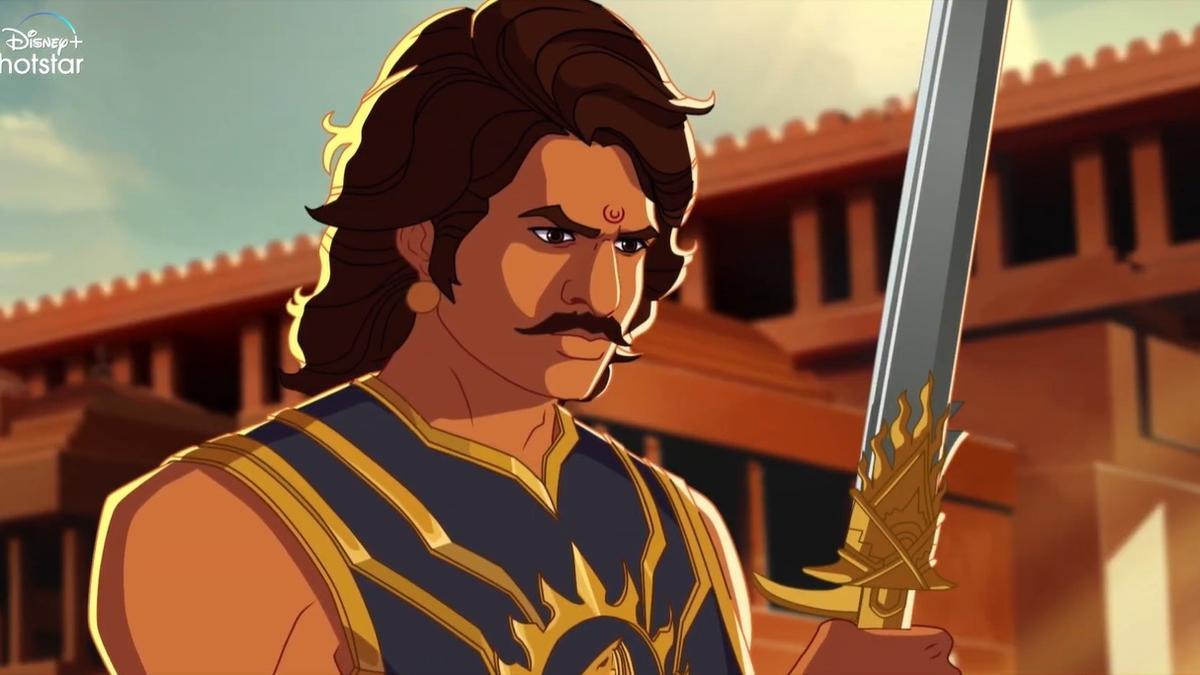
The animated series “Baahubali: Crown of Blood” has ventured into the realm of prequels, much like international superhero franchises that branch out into series, graphic novels, and additional spinoffs. Directed by Jeevan J Kang and Naveen John, this series, streaming on Disney+ Hotstar, serves as a prequel to the immensely successful “Baahubali” movies directed by SS Rajamouli.
The original “Baahubali” films, “Baahubali: The Beginning” (2015) and “Baahubali: The Conclusion” (2017), were monumental in breaking regional and language barriers, setting the stage for other ambitious projects such as “KGF,” “Pushpa,” and Rajamouli’s own “RRR.” Leveraging the legacy and massive popularity of these films, “Crown of Blood” attempts to dive deeper into the characters’ backstories.
“Crown of Blood,” created by Rajamouli and Sharad Devarajan, who also co-wrote the series with Sarwat Chadda, Jeevan J Kang, and Shivangi Singh, is built around the events preceding the original films. It spans nine episodes, with the initial 30-minute installment setting the stage before transitioning to shorter episodes ranging from 19 to 22 minutes.
Notably, the Hindi version features voice actors from the films, such as Sharad Kelkar (Baahubali), Samay Thakkar (Kattappa), Mausam (Sivagami), and Manoj Pandey (Bhalladeva). However, the decision to not involve Prabhas and Rana Daggubati in the Telugu version has likely diminished its impact. The visual resemblance of the animated characters to their live-action counterparts, despite some critics noting an uncanny similarity to Mahendra Singh Dhoni at times, aims to establish a deeper connection with the fans of the original films.
The series opens with the kingdom of Mahishmati under the shadow of a looming threat, introduced by a formidable character named Raktadeva. As the narrative unfolds, it occasionally flashes back to the childhood of Amarendra Baahubali and Bhallaladeva, providing a glimpse into the early experiences that molded their distinct personas. Amarendra Baahubali emerges as a compassionate warrior, empathizing with the people’s suffering, while Bhallaladeva is driven by a relentless pursuit of power and authority.
Despite the rich tapestry of character development, the series does little to surprise its audience. It sticks closely to the archetypes and tropes established by the films, lending authenticity but also predictability to the plot. For instance, when Kattappa is exiled and forms an alliance with an enemy, the subsequent twists are disappointingly foreseeable.
One notable exception is a revelation about Bijjaladeva’s past that resonates deeply. However, overall, the writing lacks the ingenuity and freshness needed to captivate an audience familiar with the franchise. The series repeatedly underscores the recurring themes and visual motifs of the films, such as the fascination with war machines and weaponry, albeit not as thrillingly executed.
Amarendra Baahubali’s heroic feats in the series also mirror iconic scenes from the films, like his son Mahendra lifting the Shivalinga. Both Amarendra and Bhallaladeva are granted moments of introspection about their roles and responsibilities as future rulers, revealing inner conflicts and growth. Meanwhile, Bijjaladeva’s character remains quite static, serving as a one-dimensional antagonist, although Sivagami shows slight improvement in character depth.
The series aims to cash in on the widespread popularity of the Baahubali heroes, but the animation and storytelling fall short of the cinematic grandeur. The animation, while attempting to stay faithful to the film’s aesthetics, is inconsistent and often subpar, leaving much to be desired in terms of visual engagement.
In conclusion, “Baahubali: Crown of Blood” is an ambitious prequel that expands on the beloved universe of Mahishmati. It affords fans a deeper look into the lore and background of key characters, but ultimately struggles to stand on its own. The series’ predictable plotlines and lackluster animation do not match the spectacle and innovation of its cinematic predecessors. The creators have captured the spirit of the films, but without the necessary originality and vigor, leaving it in the shadows of its legendary antecedents.












